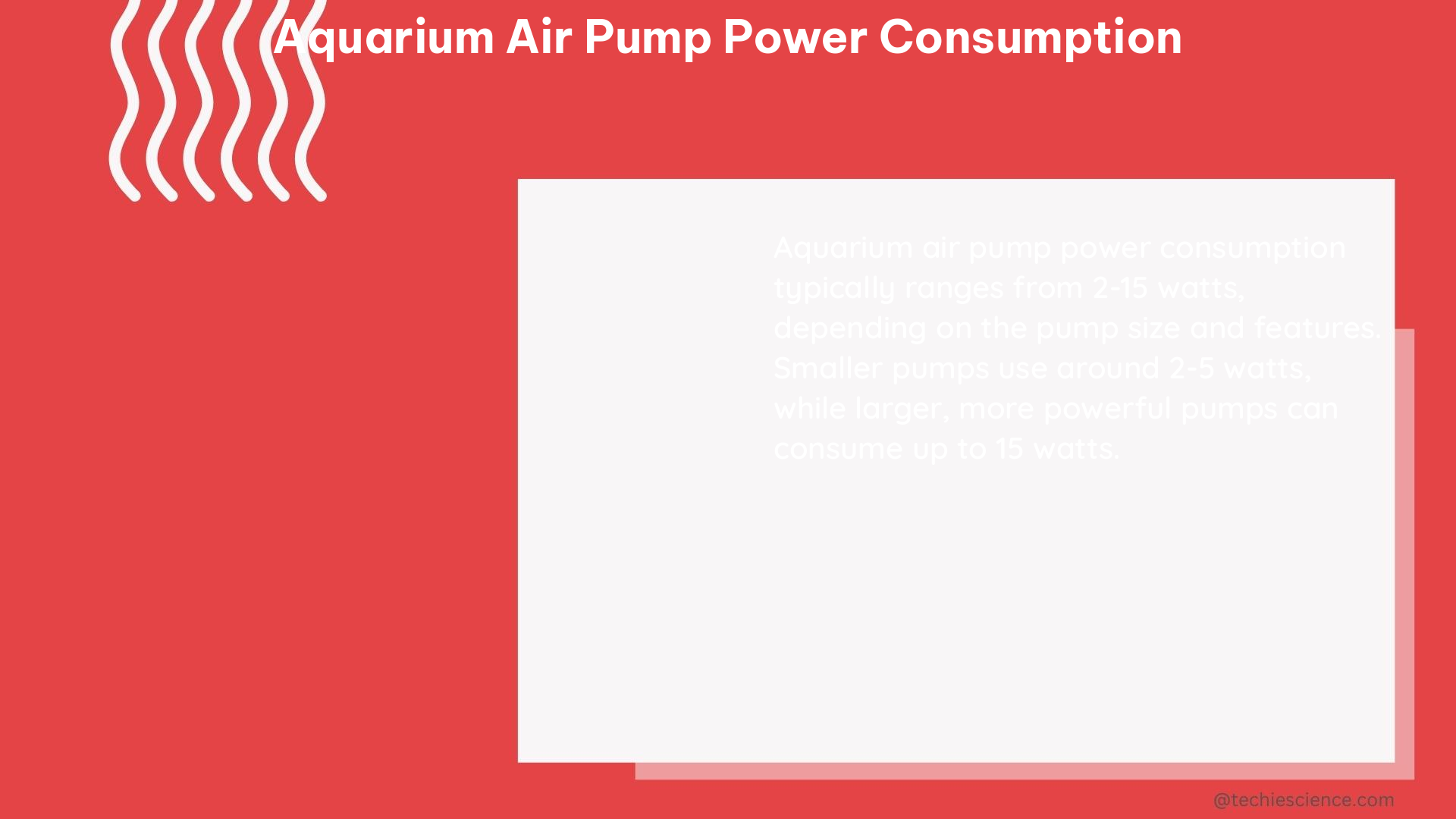Aquarium air pumps are essential for maintaining a healthy aquatic environment, but their power consumption can be a significant factor in the overall energy usage of an aquarium setup. Understanding the power consumption of your air pump is crucial for optimizing energy efficiency and ensuring a sustainable aquarium ecosystem. In this comprehensive guide, we’ll delve into the intricacies of aquarium air pump power consumption, providing you with the knowledge and tools to make informed decisions.
Calculating Air Pump Power Consumption
The power consumption of an aquarium air pump can be calculated using the formula:
Power Consumption (Watts) = Voltage x Current
Most air pumps come with a label indicating their voltage and current ratings. For instance, a typical air pump might have a voltage rating of 12 volts and a current rating of 2 amperes. Using the formula, the power consumption would be:
Power Consumption (Watts) = 12 volts x 2 amperes = 24 watts
However, it’s important to note that the actual power consumption can vary depending on the specific model and usage conditions. Factors such as the depth of the air exit, the pressure differential across the air pump, and the load on the pump can all affect the power consumption.
To get a more accurate measurement of the power consumption, you can use a wattmeter or a power meter. These devices can provide real-time measurements of the actual power consumption of the air pump, allowing you to optimize its performance and energy efficiency.
Measuring Airflow Rate

In addition to power consumption, it’s also important to measure the airflow rate of your aquarium air pump. The airflow rate is typically measured in liters per minute (LPM) or gallons per hour (GPH). To measure the airflow rate, you can use a simple method involving a measuring cup and a stopwatch:
- Fill a measuring cup with a known volume of water, such as 500 milliliters (0.5 liters) or 1 cup (237 milliliters).
- Place the measuring cup upside down over the output of the air pump, ensuring that the opening of the measuring cup is submerged in water.
- Turn on the air pump and start the stopwatch.
- Collect the bubbles that come out of the air pump and fill the measuring cup.
- Stop the stopwatch when the measuring cup is full.
- Divide the volume of the measuring cup by the time taken to fill it to get the airflow rate in LPM or GPH.
For example, if it takes 30 seconds to fill the measuring cup with 0.5 liters of water, the airflow rate would be:
Airflow Rate (LPM) = Volume of Measuring Cup / Time Taken = 0.5 liters / 0.5 minutes = 1 LPM
Or, if you use the US customary units:
Airflow Rate (GPH) = Volume of Measuring Cup / Time Taken x 60 = 237 milliliters / 0.5 minutes x 60 = 2844 GPH
Keep in mind that the airflow rate can also vary depending on the depth of the air exit and the pressure differential across the air pump.
Factors Affecting Air Pump Power Consumption
Several factors can influence the power consumption of an aquarium air pump, including:
- Pump Size: Larger air pumps generally consume more power than smaller ones, as they need to generate higher airflow rates.
- Pump Type: Different types of air pumps, such as diaphragm, piston, or linear air pumps, can have varying power consumption profiles.
- Pump Efficiency: The efficiency of the air pump’s internal components, such as the motor and impeller, can affect its power consumption.
- Aquarium Depth: Deeper aquariums require air pumps to work against a higher pressure differential, which can increase their power consumption.
- Air Tubing Length: Longer air tubing can create more resistance, leading to higher power consumption for the air pump.
- Air Stone Size: Larger air stones or diffusers can increase the backpressure on the air pump, resulting in higher power consumption.
- Water Temperature: Warmer water can affect the viscosity and density of the air, which can impact the air pump’s power consumption.
Optimizing Air Pump Power Consumption
To optimize the power consumption of your aquarium air pump, consider the following strategies:
- Choose the Right Pump Size: Select an air pump that is appropriately sized for your aquarium’s volume and depth, as oversized pumps will consume more power than necessary.
- Utilize Energy-Efficient Pump Models: Look for air pumps with high-efficiency motors and advanced design features that can reduce power consumption.
- Minimize Air Tubing Length: Use the shortest possible length of air tubing to reduce resistance and lower the pump’s power requirements.
- Optimize Air Stone/Diffuser Size: Choose air stones or diffusers that provide the desired aeration without creating excessive backpressure on the air pump.
- Monitor and Adjust: Regularly monitor the power consumption and airflow rate of your air pump, and make adjustments as needed to maintain optimal efficiency.
- Consider Alternative Aeration Methods: Explore options like surface agitation or in-tank water circulation, which can provide aeration without the need for a dedicated air pump.
By understanding and applying these principles, you can effectively manage the power consumption of your aquarium air pump, ensuring a sustainable and energy-efficient aquarium setup.
Conclusion
Aquarium air pumps play a crucial role in maintaining a healthy aquatic environment, but their power consumption can have a significant impact on your energy bills and the overall sustainability of your aquarium. By mastering the concepts of air pump power consumption, you can make informed decisions, optimize your setup, and enjoy a thriving, energy-efficient aquarium ecosystem.
References:
- Is there a relatively inexpensive way to measure the power consumption of an aquarium air pump?
- Energy Usage of Aquariums
- The Aquarium and Energy Consumption
- Dumb air pump w/ 2 outlets, only need 1
- Air Pumps are Confusing
